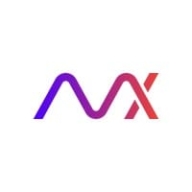

Find out what your peers are saying about Red Hat, Cisco, Broadcom and others in Network Automation.
| Product | Market Share (%) |
|---|---|
| Red Hat Ansible Automation Platform | 18.1% |
| AppViewX AUTOMATION+ | 0.5% |
| Other | 81.4% |

| Company Size | Count |
|---|---|
| Small Business | 24 |
| Midsize Enterprise | 8 |
| Large Enterprise | 48 |
The AppViewX AUTOMATION+ product enables the Application Delivery Automation and Network Security Automation solutions on our AppViewX Platform. AUTOMATION+ helps Enterprise IT manage, automate and orchestrate application delivery and network security services. AUTOMATION+ provides an application-centric view into the state of the application delivery and network security infrastructure running in multi-cloud environments. Application, network, and security engineers may self-service and initiate automation workflows that deliver compliance and true business agility.
Red Hat Ansible Automation Platform is a powerful network automation solution that allows organizations to handle every aspect of their application launch process within a single product. It enables users to share their automations so that teams within an organization can collaborate on various projects with ease. Ansible Automation Platform is designed to be used by all employees involved in the network automation process.
Red Hat Ansible Automation Platform Benefits
Some of the ways that organizations can benefit by choosing to deploy Red Hat Ansible Automation Platform include:
Red Hat Ansible Automation Platform Features
Reviews from Real Users
Red Hat Ansible Automation Platform is a highly effective solution that stands out when compared to many of its competitors. Two major advantages it offers are its automation manager and its comprehensive centralized GUI-based management interface.
MD J., a solution architect at STBL, says, “The automation manager is very good and makes things easier for customers with multi-cloud platforms.”
Aankit G., a Consultant at Pi DATACENTERS, writes, “We like the GUI-based interface for the tower. Before, we only had a command-line interface to run all the Ansible tasks. Now, the Ansible tower provides the complete GUI functionality to run, manage, and create the templates and the Ansible jobs. This includes the code and YAML file we can create. The GUI interface is the added advantage of this solution, including some integration with the different plugins.”
We monitor all Network Automation reviews to prevent fraudulent reviews and keep review quality high. We do not post reviews by company employees or direct competitors. We validate each review for authenticity via cross-reference with LinkedIn, and personal follow-up with the reviewer when necessary.